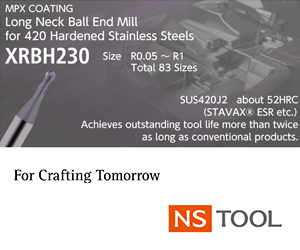
Guyson Corp. has introduced a mid-size robotic grit-blasting machine for precision surface preparation in coatings work cells. The seven-axis blast unit is capable of accurately and efficiently producing a specified surface roughness with a consistency not possible using manual or multiple-gun blasting methods.
A six-axis robot arm, serving as a blast gun manipulator, is attached to a 52 x 32-inch rotary blasting cabinet with a servomotor-driven 24-inch turntable controlled as a seventh axis of coordinated robotic motion. A part-holding fixture securely attached to the table positively locates the component, which can be oriented or rotated at controlled speed during the programmed process routine.
For grit-blast preparation of components with through-holes, vents or internal passageways, where media could collect during processing, the spindle or turntable is designed with core air supplied to allow a positive and adjustable flow of purge air through the component during blasting. If exacting table run-out tolerances apply, the blast system manufacturer can do the machining in place using custom robot end-of-arm tooling.
Key to the elimination of over-blasted and under-blasted component surfaces is the robotic blast system's ability to constantly maintain the exact blasting angle, nozzle-to-surface distance and surface speed while precisely following the contours of complex-shaped parts. The robotic blasting machine with a single blast gun executes the motion program identically each time, and the system can store and recall process recipes for over one hundred different components. Significant productivity gains can be realized by making set-up for different parts unnecessary, since the operator only needs to install the interchangeable fixture and identify the correct program to prepare for grit-blasting a new component.
Beyond accurate and repeatable motion of the nozzle and component, precision roughening requires advanced blast media delivery and reclamation to ensure that the miniature grit projectiles that actually do the work of surface modification are fully controlled. Features such as automatic regulation of the blast pressure, media flow sensing, media level sensing, automatic media replenishment and screen classification of the blasting grit are available to enhance the consistency of the surface finishing results.
When the quality of surface preparation is considered critical and validation or documentation of process control is required, the blast machine designer and manufacturer offers a SCADA controls package that can display, capture and record data on all blasting parameters throughout each blast cycle, providing an audit trail to verify conformity to specifications or process work instructions.
Prospective users of robotic grit-blasting or surface preparation systems are invited to submit sample components for free laboratory testing and application engineering evaluation at the blast machine builder's factory in northeastern New York State.
Contact Details
Related Glossary Terms
- fixture
fixture
Device, often made in-house, that holds a specific workpiece. See jig; modular fixturing.
- manipulator
manipulator
Arm or basic object-transferring device. Hands or gripping devices vary according to application, as do arm design and number of joints (axes or degrees of freedom). See degrees of freedom; effectuating device.
- process control
process control
Method of monitoring a process. Relates to electronic hardware and instrumentation used in automated process control. See in-process gaging, inspection; SPC, statistical process control.








